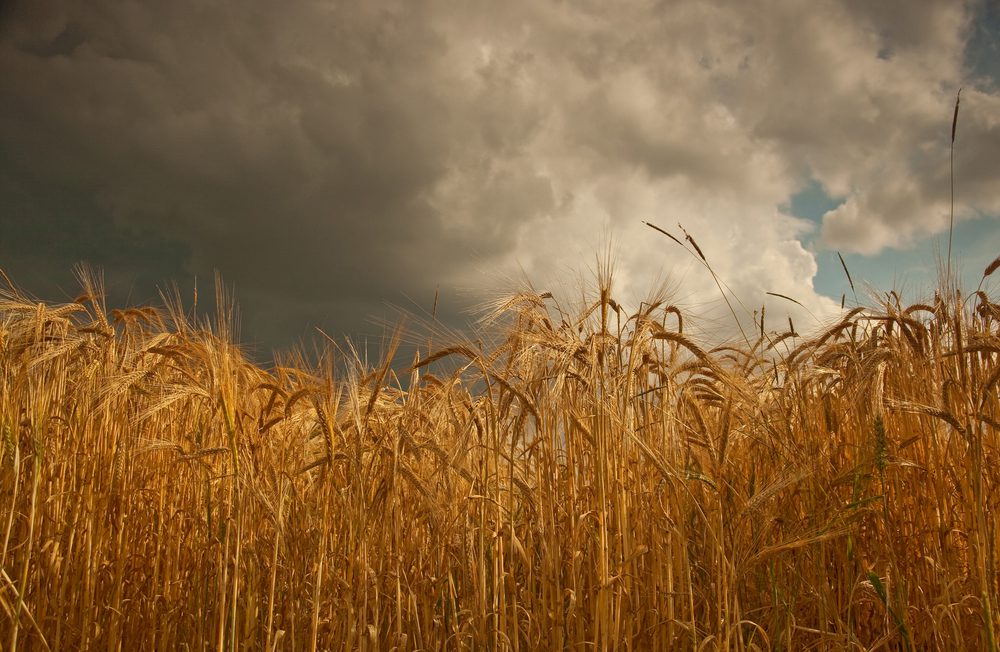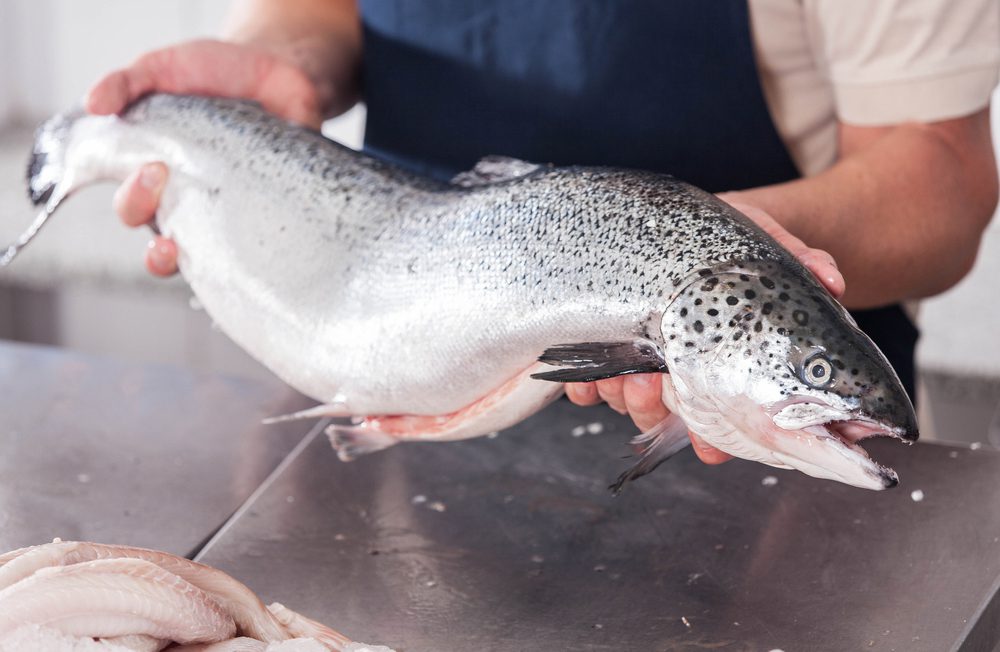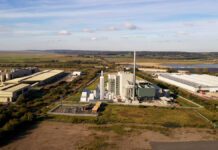The food and drink sector, with its hefty carbon footprint and large quantities of waste – much of it pricey from a disposal point of view – appears a natural target for innovative thinking about organic waste and how it can be transformed into something useful – not just energy but materials. And there are signs this is an area beginning to attract serious attention and investment. Paul Marsh reports.

AT the Scottish Resources Conference in October, Zero Waste Scotland reported on an apparent £800 million opportunity for a number of projects in the beer, whiskey and fish sectors in Scotland, addressing the problem of making better use of by-products – initiatives which are either underway or at the development phase. As WRAP’s director of sustainable food systems Richard Swannell asked at the event: What’s been stopping people from investing, if the numbers are so attractive? Louise McGregor, head of circular economy with ZWS, suggested there simply hasn’t been the drive to do it until now. But part of the challenge has also been the diverse nature of the waste arising from these sectors.
Similarly kaleidoscopic is the range of techniques being brought to bear on the challenge, with her own presentation reporting on activities in Scotland as diverse as aquaculture, biorefining and novel methods for the extraction of high-value materials.
How might the circular economy work in the food and drink sector?
The Scottish government launched an evidence-gathering programme in September 2013, to better understand how a circular economy might work. A sector study on beer, whiskey and fish appeared earlier this year, providing a detailed evaluation of the practicalities – and likely financial returns – that could accrue from a small number of projects, some of which are scheduled to reach the demonstration phase within the next couple of years. “It’s about how can we produce food more sustainably from a more efficient food production system”, according to McGregor, presenting on the findings from the report. “And then it’s about extracting more value from some of the by-products of food production, and making sure we reduce the [environmental] impact of some of these activities.”
At the outset of this investigation, an important activity was to identify geographical clusters – areas where sites with complementary and similar by-products are located in close proximity, thus presenting opportunities for economies-of-scale and minimising the effort needed to transport materials.
Zero Waste Scotland led the investigation, which drew on work it is doing to support businesses looking to adopt more circular processes. It pinpointed a number of opportunities in the food and drink sector to pool by-products and resources, with a significant economic prize for innovators.
GM crop ban: An issue?
Industrial biotechnology appears to be a key discipline in this effort, and an area of research which is being heavily driven by the circular economy, according to a spokesperson for the sector Dr Ian Archer of the Industrial Biotech Innovation Centre (IBioC), who also presented at the event. Scotland’s recent decision to ban GM crops has the country’s whiskey sector in mind, and the need to protect brand identity and the purity of its supply chain, he said. But GM plays a crucial role in industrial processes like fermentation, and one unaffected by the legislation.
New opportunities for distillers
For the whiskey industry, bio-refining was one of four key techniques identified by the report as offering opportunities to get more value out of by-products. This kind of facility combines sometimes multiple biological transformation processes – such as anaerobic digestion, fermentation and microbial treatment – to turn waste biomass into a spectrum of useful products, including chemicals (such as biofuels), useful materials and energy. The other three techniques highlighted as promising for whiskey producers were the extraction of high concentration protein from pot ale, the extraction of polyphenols from by-products (something under evaluation by FDT Consulting in Scotland), and the generation of energy from microbial fuel cells integrated with algae production.
Transport fuels from whiskey by-products: A big opportunity?
On the bio-refining front, a funding decision that suggests confidence in the promise of the technology was the DoT’s September announcement of an £11 million investment in Celtic Renewables’ proposed facility in Grangemouth, one of four geographical hubs identified by the report. The firm is going to be using draff and pot ale from up to six distilleries in the area to produce acetone, biobutane, biobutanol and a high-value animal feed, with a demonstration facility scheduled to open in 2018.
The report concluded that if Celtic Renewables’ technology was applied to all the malt whiskey brands it would be valued at £100 million – a possibility McGregor said was “clearly unlikely but it gives a sense of what’s possible”. In the findings of the report, this is just one element of an economic prize said to be worth £503 million to £803 million. The other projects evaluated were Beans4Feeds’ technology to improve UK faba bean cultivation and reduce reliance on imported soya, valued at about £65 million; Pureope’s process for extracting polyphenols content from distillery by-products, valued at about £50 million; and Cells United’s technology for processing salmon waste, producing a protein food supplement with a projected market value of around £300 million.
The report highlighted these and other applications with potential to “cascade and integrate the costs across a number of companies and sectors”. These included possibilities for craft breweries to produce products for local or niche markets, such as soil conditioners or substrates for mushroom cultivation, and extracting protein from fish. In Scotland the available options for fish waste tend towards the smaller scale end of things, including schemes for turning shells into pesticide.

Better than a slap in the face…
One audience member appeared to be a worried fish farmer, who asked: “Can you make anything from dead salmon?” The restrictions on landfilling in Scotland are an obvious economic challenge here. He was directed to contact Cells United, which is looking to build a facility in Dingwall for extracting high value proteins from the residue of the fish processing industry and from shellfish.
Dr Ian Archer of the Industrial Biotechnology Innovation Centre (IBioC) presented on industrial biotechnology, offering his perspective on the various pathways by which biodegradeable waste can be turned into something useful – and where research might open up new pathways in the future.
Indigestible truth?
Looking at where AD fits into this broader picture, it’s hard to escape the conclusion that it’s somewhat wasteful, he suggested. After all, what is AD doing? “It take this really complex and interesting material, that nature has put a huge amount of effort into generating, and turns it back into the two simplest carbon molecules you can think of”, he said, the latter referring to carbon dioxide and methane. These can’t be transformed into anything chemically useful, or at least it’s “a really difficult biotechology challenge”, hence burning it for energy is the preferred option with the gas currently coming out of AD plants.
Converting biodegradeable waste into complex sugars, fermentable sugars, and eventually useful products – is a far more sensible pathway to go down, he said.
Speaking on behalf of a local authority, Dumfries and Galloway, which has recently started food waste collection, one audience member asked what was stopping the biotech industry from taking this food waste and making higher value products than are permitted by AD?
Archer said this is currently a challenge being addressed by research, with two large firms in Scotland working on finding the best way to convert the complex sugar from biodegradeable waste into fermentable sugars, which can then be transformed into useful materials. “I would say this is one of the lowest hanging fruit in the industrial biotech space,” he said, but there appears to be “a technology gap in the middle”, presently.
The other obstacle is with the complexity of the waste. Both firms addressing the problem are doing so with specific types of waste: Bread waste and paper waste, respectively. Complicated municipal waste “makes things more difficult”. It’s not so big a problem for manufacturing materials like plastics, but with something like pharmaceuticals, “the provenance of raw materials is very important”.
Another questioner asked what might happen if we establish the processing technology to handle these waste flows, and then succeed as a society in cutting our food waste?
Morag Garden of the Scotch Whiskey Association suggested her industry could guarantee a constant stream of pot ale and draff, for instance. Archer pointed to wood waste as a possible second choice if food waste were to be in short supply.

Wood waste prize
One form of biomass which presently frustrates our ability to do anything useful with it (other than burning it) is lignin, the aromatic polymer that allows trees to stand up, and gives them their thickness. The large amount of it produced by facilities like paper mills has to be treated like a waste product at present. However, he said, “it’s a phenomenal substitute for the aromatic molecules that come out of the oil industry”, an issue whose urgency is increasing as oil resources diminish and we face the prospect of running out of “some really useful chemicals”. He said: “Finding a way to break lignin down into a smaller more interesting molecule is probably one of the biggest challenges in industrial biotechnology.”
Fish farming with a difference
Outside the territory covered by the Beer, Whiskey and Fish report, another emerging area with promise for reducing waste and improving the bottom line of food producers is aquaculture.
One firm ZWS has worked with in this respect is the Loch Fyne Oyster Company, a supplier of mussels, fresh fish and organic meat. A technique it has been trialling – with European funding – is that of “integrated multi-trophic aquaculture”, which is about “looking at salmon farming in a slightly different way”, said McGregor. This involves attempting to mimic the nutrient flows used by normal biosystems. It can be used within the food and drink sector to produce different outputs from a single production system. In this case it involved farming salmon in close proximity to the cultivation of shellfish and seaweed. Such an approach helps tackle the surfeit of nitrogen arising from salmon farming – the salmon absorb only about 40% of the nitrogen in salmon feed, the rest ending up in fish excreta, presenting challenges in terms of ecosystem management and waste disposal. With the scheme trialled here, the shellfish and seaweed help use up the nitrogen and, according to McGregor, “what we’ve found is [you get] higher growth rates for both of those things” – seaweed and shellfish – than with conventional approaches to their cultivation. LFOC is apparently looking to expand the trial into other areas of Scotland.
For all the high-tech promise of many of these emerging techniques, there’s an undeniable simplicity in simply putting waste products back on the land, a traditional destination. One questioner wondered whether such new techiques might displace this kind of activity, to the detriment of the environment.
McGregor said these emerging solutions had to be considered “in the round, and not just because ‘this is going to give us more value’”. Garden said the whiskey sector already provides fertilisers and so on. But it was also important to have flexibility, “so if you’re 90 miles from the nearest AD plant, for example, you can take the best options available.”







